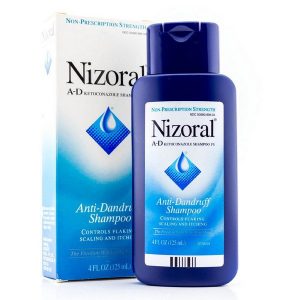Contact SOMA Skin & Laser for a seborrheic dermatitis consultation 973-763-7546
What is seborrheic dermatitis?

Seborrheic dermatitis is a chronic inflammatory condition affecting hairy areas of the body where there are many sebaceous glands, such as the scalp, eyebrows, and face, especially the nasolabial folds. Other affected areas include the intertriginous areas, axilla, groin, buttocks, eyelids, chest, and inframammary folds. It is believed to result from an inflammatory reaction to species of Malassezia (previously categorized as Pitysosproum), an otherwise harmless yeast organism. It is a common problem, affecting 3-5% of health persons. Its incidence increases sharply in persons with AIDS, in which up to one third of patients are reported to have seborrheic dermatitis. It is also increase in patients with Parkinson’s disease. The condition has periods of flare, marked by inflammation and variable pruritus, followed by remissions. Its onset correlates with sebaceous gland activity, occurring during infancy and after puberty. The condition is related to dandruff, which is scale without inflammation. The rash of seborrheic dermatitis is a symmetric patch or plaque with indistinct margins and exhibiting mild to moderate erythema and a greasy yellowish scale. In infants, seborrheic dermatitis often presents as thick yellow scale on the scalp, commonly referred to as “cradle cap”.
With what can seborrheic dermatitis be confused?
Seborrheic dermatitis can be confused with other causes of dermatitis, such as atopic dermatitis or contact dermatitis, psoriasis, fungal infections of the scalp (tinea capitis), lupus erythematosus, rosacea, and histiocytosis X.
How is seborrheic dermatitis diagnosed?
Seborrheic dermatitis is usually diagnosed clinically, unless the diagnosis is uncertain, in which case investigations are warranted, such as biopsy to rule out histiocytosis X or lab work for lupus erythematosus. A history of dandruff is often elicited. In darker skinned patients, hypopigmentation is often present. Sometimes lesions are arcuate or petaloid, referred to as “petaloid seborrheic dermatitis”.
How is seborrheic dermatitis treated?
Dandruff and seborrheic dermatitis of the scalp can be treated with shampoos containing selenium sulfide (e.g. Selsun Blue), zinc pyrithione (e.g. Head & Shoulders), salicylic acid, coal tar, or the antifungal agent ketoconazole (e.g. Nizoral). They should be used three times a week and left in place for several minutes with each application. Overnight application under occlusion of oil-based products, such as Dermasmoothe F/S, can help loosen scale. If the condition does not respond to these shampoos, a topical low potency steroid, or ketoconazole or other antifungal cream can be tried. Seborrheic dermatitis of the body can be treated with the shampoos described above, or with ketoconazole cream, lotion (e.g. Nizoral), or foam (e.g. Extina), or another topical antifungal, often in conjunction with a low potency steroid cream such as Desonide or hydrocortisone. Topical steroids should only be used short term, as rebound is common, and should be Class IV or lower in potency. The calcineurin inhibitors (e.g. pimecrolimus and tacrolimus) and sulfur products are also effective. Systemic treatment with ketoconazole or fluconazole may be warranted for severe cases. Seborrheic blepharitis is seborrheic dermatitis of the eyelids, and should be treated with gentle cleaning of the eyelashes with baby shampoo and cotton swabs.
What is the prognosis for seborrheic dermatitis?
Infantile seborrheic dermatitis usually resolves after 6 to 9 months. In adult seborrheic dermatitis, the course is usually waxing and waning, but easily managed with the treatments described above. Frequent hair washing is advised to stop scale from building up.
